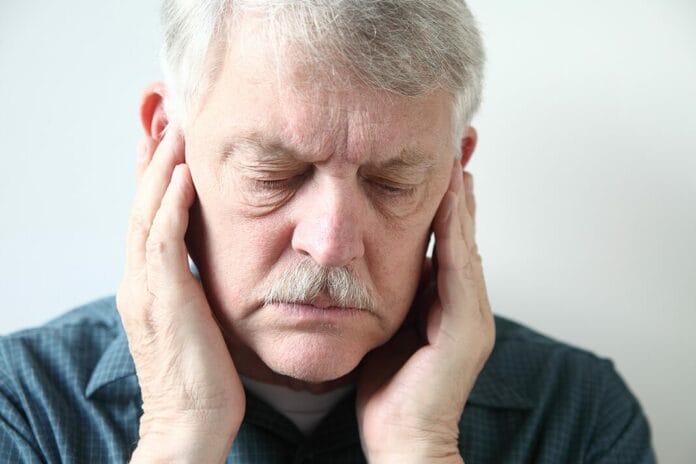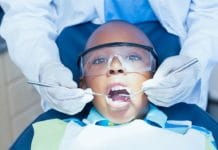In 400 B.C., Hippocrates suggested that pulling teeth could cure arthritis.1 Was he a total whack job, or was he on to something? He turned out to be universally recognized as the father of modern medicine, so chances are he was on to something.
Most Common Forms of Arthritis
The two most prevalent forms of arthritis are osteoarthritis (OA) and rheumatoid arthritis (RA). Osteoarthritis, the most common arthritis, is a degenerative joint disease where the tissues slowly break down over time. It’s technically considered non-inflammatory arthritis, even though low-grade chronic inflammation is present.2
OA is common in older people, but anyone can develop it. A history of injury, being overweight, overuse from repetitive movements, joints that aren’t formed correctly, and even a family history can increase one’s risk of osteoarthritis.2
There is a whole separate class of arthritides that are considered inflammatory. (Athritides is the plural of arthritis, and honestly, I never knew the plural form before sitting down to write this.) RA is the most common of the inflammatory arthritides. Other common inflammatory arthritides include ankylosing spondylitis, gout, and psoriatic arthritis.3,4
In the United States, it’s estimated that 1.3 million adults have RA.5 In 2020, it was estimated that 17.6 million people worldwide had RA, and it’s projected that by 2050, 31.7 million people will be living with RA.6
RA is an autoimmune inflammatory disease and is characterized by joint pain, swelling, and stiffness. It can affect any joint in the body but typically starts in the smaller joints. Without proper treatment, RA leads to continued joint damage and deformation. Inflammation can be decreased or even reversed, but joint destruction cannot. Eventually, when enough damage is done, chronic pain and disability can occur.7
Early diagnosis of RA is key in improving outcomes, including reducing the risk of systemic consequences beyond joint damage that may lead to premature death. Systemic consequences can include an elevated risk of cardiac and vascular manifestations and cancer, especially hematologic and kidney cancers. Cardiovascular disease is the leading cause of mortality in RA. Additional RA complications can include peripheral or central nervous system manifestations, musculoskeletal changes and disorders, and infections.7,8
Oral Manifestations of Arthritis
Common oral manifestations of RA are Sjogren’s syndrome and temporomandibular joint disorder (TMJD), both due to chronic and aggressive inflammation. Methotrexate-induced ulcers in the mouth from the treatment of RA can also occur.1 Hygienists know how painful and debilitating all these can be for patients.
Patients with Sjogren’s are at an increased risk of decay and periodontal disease due to decreased salivary flow.9 In addition, limited mobility of hands leads to an inability to clean the mouth adequately, and we have a potential nightmare on our hands.
If a patient has a limited range of motion and pain from TMJD, again, proper oral hygiene can be an issue. For those that have the trifecta of terrible TMJD, Sjogren’s, and limited mobility in their hands, the future of their oral health looks bleak.
Bacterial Factors of Arthritis
Bacterial testing of synovial fluid in RA patients has revealed DNA of all the usual suspects involved in periodontal disease. The DNA of P. gingivalis, T. denticola, P. intermedia, P. nigrescens, T. forsythia, and F. nucleatum have all been found in the synovial fluid of patients with active RA.10
This supports what hygienists already know: What happens in the mouth doesn’t stay in the mouth. All the microorganisms and inflammation are shared throughout the entire body via blood, saliva, lymph, and even nerve tissues.11
What can we do as clinicians to help our patients?
There is more and more evidence that inflammatory arthritis and periodontal disease are bidirectional.12 Both periodontal disease and RA share several similar characteristics in their disease progression.1,13 They both have soft and hard tissue degradation resulting from inflammatory mediators. Both are influenced by such things as genetic, environmental, and lifestyle factors.1
There is a lot of interest in learning more about patients with RA taking tumor necrosis factor (TNF) inhibitors since it’s widely known there is increased TNF in crevicular fluid and inflamed periodontal tissues. Studies have shown the level of alveolar bone loss due to periodontal disease in patients with RA is similar to other RA erosion sites in their bodies.10
Hygienists are well aware of the inflammatory cascade involved with periodontal disease. We can intervene with non-surgical treatment of periodontal disease and patient education on nutrition and oral hygiene to decrease inflammation in the mouth. Studies have shown treating periodontal disease can decrease C-reactive proteins and TNF levels, thus decreasing the disease activity score of RA.1 Studies have linked periodontal disease severity directly to RA severity.12
Patients with any type of arthritis may have limited mobility and need additional education on modifying their home care techniques. Discussing and demonstrating how to use such things as electric toothbrushes, toothbrush adaptors, oral irrigators, or floss aids is of great benefit to these patients.
In Closing
Hygienists have the opportunity to partner with our patients to help reduce oral inflammation and arrest the progression of periodontal disease. Helping our patients regain their oral health is a step in helping them regain their overall health.
Before you leave, check out the Today’s RDH self-study CE courses. All courses are peer-reviewed and non-sponsored to focus solely on pure education. Click here now.
Listen to the Today’s RDH Dental Hygiene Podcast Below:
References
- Bingham, C.O., 3rd, Moni, M. Periodontal Disease and Rheumatoid Arthritis: The Evidence Accumulates for Complex Pathobiologic Interactions. Current Opinion in Rheumatology. 2013; 25(3): 345-353. https://www.ncbi.nlm.nih.gov/pmc/articles/PMC4495574/
- Mohammed, A., Alshamarri, T., Adeyeye, T., et al. A Comparison of Risk Factors for Osteo- and Rheumatoid Arthritis Using NHANES Data. Preventive Medicine Reports. 2020; 20: 101242. https://pmc.ncbi.nlm.nih.gov/articles/PMC7689317/
- Senthelal, S., Li, J., Ardeshirazadeh, S., Thomas, M. (2023, June 20). Arthritis. StatPearls. https://www.ncbi.nlm.nih.gov/books/NBK518992/
- van Delft, E.T.A.M., Jamal, M., den Braanker, H., et al. A Systemic Review on Time Trend Incidence of Rheumatoid Arthritis in Outpatient Rheumatology Clinics. Frontiers in Medicine. 2022; 9: 933884. https://www.ncbi.nlm.nih.gov/pmc/articles/PMC9448917/
- Xu, Y., Wu, Q. Prevalence Trend and Disparities in Rheumatoid Arthritis Among US Adults, 2005-2018. Journal of Clinical Medicine. 2021; 10(15): 3289. https://www.ncbi.nlm.nih.gov/pmc/articles/PMC8348893/
- GBD 2021 Rheumatoid Arthritis Collaborators. Global, Regional, and National Burden of Rheumatoid Arthritis, 1990-2020, and Projections to 2050: A Systemic Analysis of the Global Burden of Disease Study 2021. The Lancet Rheumatology. 2023; 5(10): e594-e610. https://doi.org/10.1016/S2665-9913(23)00211-4
- Guo, Q., Wang, Y., Xu, D., et al. Rheumatoid Arthritis: Pathological Mechanisms and Modern Pharmacologic Therapies. Bone Research. 2018; 6: 15. https://doi.org/10.1038/s41413-018-0016-9
- Kim, J.W., Suh, C.H. Systemic Manifestations and Complications with Rheumatoid Arthritis. Journal of Clinical Medicine. 2020; 9(6): 2008. https://www.ncbi.nlm.nih.gov/pmc/articles/PMC7356332/
- Sjögren Disease. (2023, August 23). American Dental Association. https://www.ada.org/en/resources/ada-library/oral-health-topics/sjogren-disease
- Krutyhołowa, A., Strzelec, K., Dziedzic, A., et al. Host and Bacterial Factors Linking Periodontitis and Rheumatoid Arthritis. Frontiers in Immunology. 2022; 13: 980805. https://pmc.ncbi.nlm.nih.gov/articles/PMC9453162/
- Peng, X., Cheng, L., You, Y., et al. Oral Microbiota in Human Systematic Diseases. International Journal of Oral Science. 2022; 14(1): 14. https://doi.org/10.1038/s41368-022-00163-7.
- Petit, C., Culshaw, S., Weiger, R., et al. Impact of Treatment of Rheumatoid Arthritis on Periodontal Disease: A Review. Molecular Oral Microbiology. 2024; 39(4): 199-224. https://onlinelibrary.wiley.com/doi/full/10.1111/omi.12454
- Renvert, S., Berglund, J.S., Persson, G.R., Soderlin, M.K. The Association Between Rheumatoid Arthritis and Periodontal Disease in a Population-Based Cross-Sectional Case-Control Study. BMC Rheumatology. 2020; 4: 31. https://bmcrheumatol.biomedcentral.com/articles/10.1186/s41927-020-00129-4











